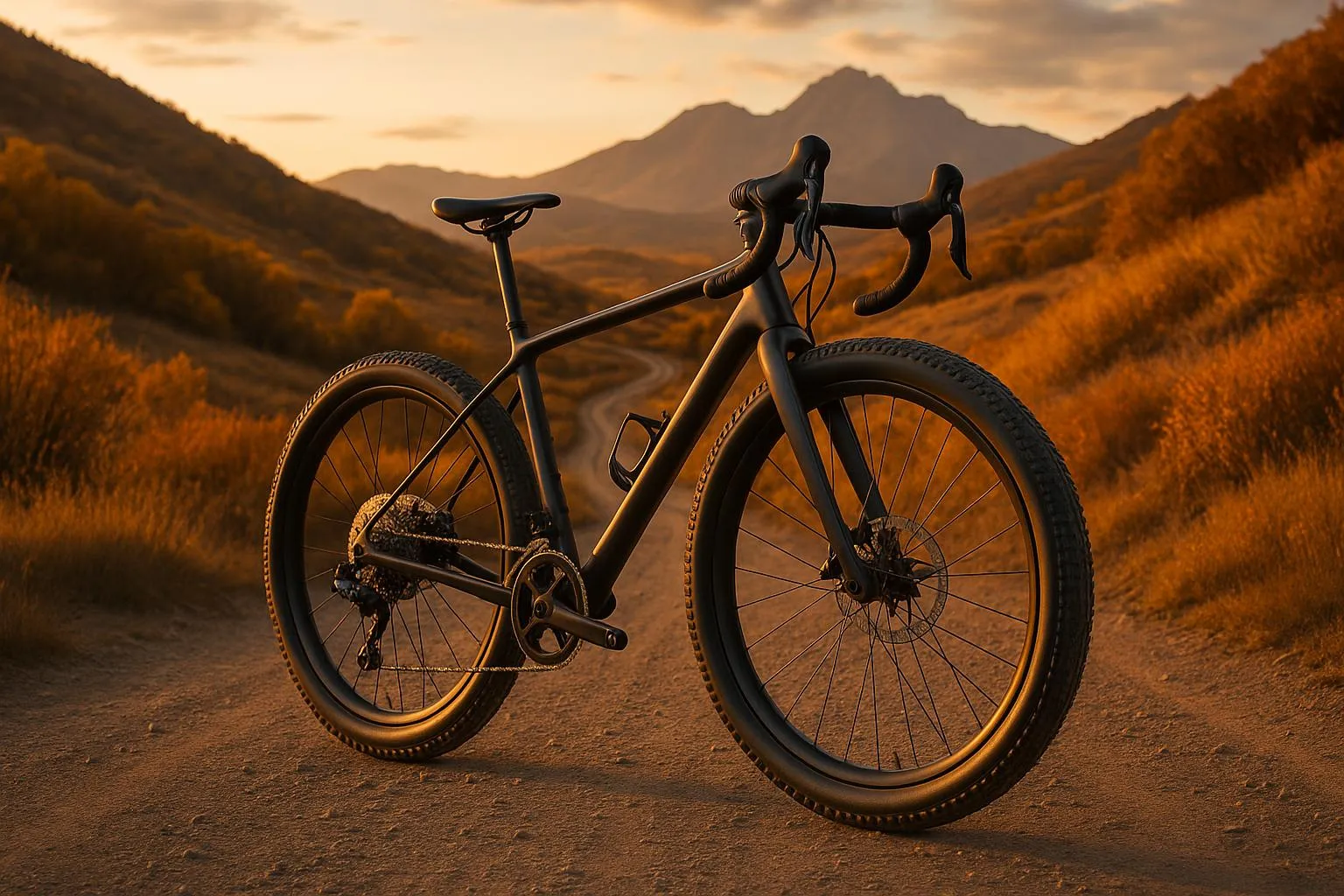The world of cycling is in a constant state of evolution, but no category has seen a more dramatic and exciting transformation in recent years than gravel riding. What started as a niche for cyclists seeking to escape paved roads has exploded into a full-blown revolution. As we ride into 2025, the gravel bike is not just a modified road bike anymore; it’s a purpose-built machine designed for versatility, comfort, and, above all, adventure. This revolution is being driven by three key trends: the move to wider tires, radical new frame geometries, and the relentless pursuit of the ultimate “do-it-all” bike.
The Era of Wide Tires: Why Bigger is Better
If there’s one trend that defines the gravel bike revolution, it’s the dramatic increase in tire width. Not long ago, a 38mm or 40mm tire was considered wide for a drop-bar bike. Today, 50mm is the new standard, and many riders are pushing the boundaries even further, with some bikes now accommodating 2.2-inch mountain bike tires. This shift isn’t just about looks; it’s about a fundamental change in how we think about performance and comfort on varied terrain.
So, why the move to bigger tires? The benefits are numerous and transformative for the riding experience. Enhanced comfort stands at the forefront of these advantages. Wider tires can be run at lower pressures, which allows them to absorb more of the bumps and vibrations from rough roads. This translates to a smoother, more comfortable ride, reducing rider fatigue on long days in the saddle. The difference between a 40mm tire at high pressure and a 50mm tire at lower pressure is immediately noticeable, especially over extended distances on challenging terrain.
Improved traction and control represent another significant benefit of wider rubber. A wider tire has a larger contact patch with the ground, providing significantly more grip on loose surfaces like gravel, dirt, and even light singletrack. This added traction gives riders more confidence and control, especially when cornering or climbing on challenging terrain. The psychological benefit of knowing your tires will grip when you need them most cannot be overstated, particularly for riders who are new to off-road cycling.
The increased versatility that comes with wider tires is perhaps the most compelling argument for the trend. With wider tires, a gravel bike can handle a much wider range of conditions. It can float over sand, power through mud, and roll over rocks that would stop a narrower tire in its tracks. This versatility is at the heart of the gravel ethos, allowing riders to seamlessly transition from pavement to dirt and back again without worrying about whether their equipment is up to the task.
Even professional gravel racers are embracing the “bigger is better” philosophy. As Alexey Vermeulen, a top gravel pro, noted in a recent interview with ENVE Composites, wider tires can actually have lower rolling resistance on rough surfaces and provide a crucial advantage in preventing flats during high-speed races. When racing at speeds exceeding 20 mph in a group, riders often hit rocks without seeing them, and the impact force when sitting fully on the saddle can easily cause punctures with narrower tires. The move to 45mm and beyond has become essential for competitive success at events like UNBOUND and SBT GRVL.

A New Geometry for a New Kind of Riding
The move to wider tires has gone hand-in-hand with a revolution in frame geometry. To accommodate the larger rubber, bike designers have had to rethink traditional frame designs, resulting in a new breed of gravel bikes that are more capable and confidence-inspiring than ever before. This isn’t simply about making room for bigger tires; it’s about creating an entirely different riding experience that prioritizes stability and control over pure speed.
Slacker head tube angles represent one of the most significant geometry changes in modern gravel bikes. Compared to a traditional road bike, which might have a head tube angle of 73 degrees or more, many new gravel bikes feature slacker angles in the 69-71 degree range. This makes the steering more stable and predictable, especially at high speeds and on rough descents. The bike feels less nervous and twitchy, allowing riders to maintain composure even when the terrain gets challenging. According to Canyon’s geometry guide, this slacker angle creates a more relaxed steering response that helps riders feel confident on long gravel rides.
A longer wheelbase also contributes to a more stable ride, preventing the bike from feeling twitchy or nervous on loose surfaces. This increased length between the front and rear axles creates a more planted feeling, particularly when descending or navigating technical sections. The trade-off is slightly slower handling in tight corners, but for most gravel riding scenarios, the added stability is far more valuable than quick steering response.
Lower bottom brackets represent another key geometry change in modern gravel bikes. A lower bottom bracket drops the rider’s center of gravity, further enhancing stability and cornering confidence. This lower position makes the bike feel more planted and secure, particularly when leaning into corners on loose gravel or navigating off-camber sections of trail.
These geometry changes, combined with features like flared drop handlebars for more control in the drops, create a bike that feels planted and secure, encouraging riders to push their limits and explore more challenging terrain. This focus on rider confidence is a key part of the gravel revolution, making off-road riding more accessible and enjoyable for a wider range of cyclists. For more on how technology is making cycling safer and more accessible, check out our post on the Cycling Safety and Visibility Technology Revolution.
The All-Road Dream: One Bike to Rule Them All
The ultimate goal of the gravel bike revolution is to create a single bike that can do it all. A bike that’s fast and efficient on the road, comfortable and capable on gravel, and even fun on light singletrack. This “all-road” or “quiver-killer” bike is becoming a reality thanks to a host of innovative features that blur the lines between different cycling disciplines.
Internal frame storage represents one of the most practical innovations in modern gravel bike design. Taking a cue from the mountain bike world, many new gravel bikes feature internal storage compartments in the down tube. This allows riders to carry tools, a spare tube, and other essentials without the need for a saddlebag, keeping the bike’s lines clean and uncluttered. The engineering behind these storage solutions is impressive, with companies like ENVE developing sophisticated latch systems that are both secure and easy to use, even with gloves on during a ride.
Mounting points have proliferated on modern gravel bikes to an extent that would have seemed excessive just a few years ago. Modern gravel bikes are covered in mounting points for racks, fenders, and a multitude of bottle cages and accessory bags. This makes them incredibly versatile, easily adaptable for everything from a quick after-work spin to a multi-day bikepacking trip. The ability to configure a bike for different types of riding without needing multiple specialized machines is a game-changer for many cyclists.
Gravel-specific suspension systems are becoming more common, though they remain somewhat controversial in the gravel community. While not yet ubiquitous, short-travel suspension forks and even rear suspension systems are becoming more common on gravel bikes. These systems take the edge off the roughest terrain, further enhancing comfort and control. The key is finding the right balance between compliance and efficiency, ensuring that the suspension helps rather than hinders performance.
This blend of road bike speed and mountain bike capability is what makes the modern gravel bike so appealing. It’s a bike that encourages exploration and adventure, a bike that says “yes” to that intriguing dirt road you’ve always wondered about. And with the rise of e-gravel bikes, this accessibility is expanding even further, as we’ve seen in the E-bike Smart Technology Revolution.

The Revolution Rolls On
The gravel bike revolution is more than just a passing trend; it’s a fundamental shift in how we think about cycling. It’s about freedom, versatility, and the joy of discovery. The barriers to entry have never been lower, with bikes available at every price point and a welcoming community ready to share knowledge and routes with newcomers. Whether you’re a seasoned racer looking for the latest competitive edge or a curious newcomer wanting to explore beyond the pavement, there’s never been a better time to join the gravel revolution.
With bikes that are more capable, comfortable, and versatile than ever before, the only limit is your imagination. The combination of wider tires, progressive geometry, and innovative features has created machines that can truly handle any terrain you throw at them. As urban infrastructure continues to improve for cyclists, as highlighted in our post on Urban Cycling Infrastructure Revolution, the gravel bike serves as the perfect tool for exploring both city and countryside.
For more on the latest gravel bikes and gear, check out the excellent resources at Bicycling Magazine and Cycling Weekly. And for in-depth reviews and race coverage, be sure to visit Gravel Cyclist and Cyclingnews. The gravel revolution is here, and it’s time to get out there and ride.




